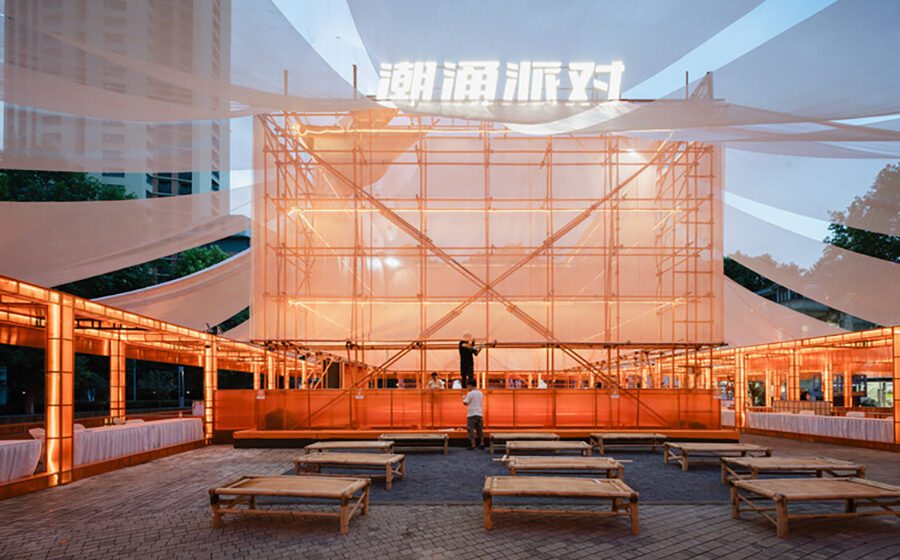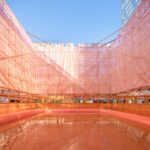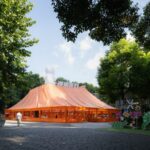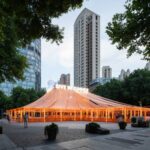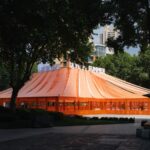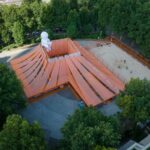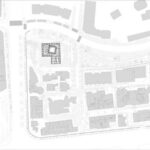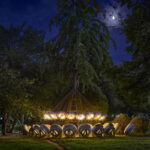Situated in Wuhan, China, the Dive In Summer Pavilion is a temporary installation designed by UAO Design. Located near the Yangtze River and Hankou Beach, the pavilion serves as a nodal point between low and high urban landscapes, reflecting a transition from nature to urbanization.
Design Concept
The pavilion’s design embodies the concept of lightness, both in form and materiality. Surrounded by decades-old camphor and French plane trees, the pavilion features a canopy-like structure that minimizes encroachment on the surrounding sky while allowing natural light to filter through. Translucent roof materials create an ethereal ambiance, enhancing the pavilion’s light and airy aesthetic.

Sustainable Construction
In line with environmental principles, the pavilion utilizes reusable materials such as scaffolding, prefabricated trusses, and sunlight panels. These materials not only minimize waste but also reduce the pavilion’s ecological footprint. Additionally, the construction process is designed to minimize disturbance to the site and surrounding ecosystem, ensuring environmental sustainability.
Central Features
At the heart of the pavilion lies a pool, symbolizing the courtyard of historical buildings in Wuhan. An inflatable figure, “the diver,” perched atop the pool’s roof, serves as a visual focal point, enhancing the pavilion’s communicative appeal. Surrounding the pool are 12 bamboo beds, inviting visitors to reminisce about summer nights in Wuhan from decades past, evoking a sense of nostalgia and connection to the city’s heritage.
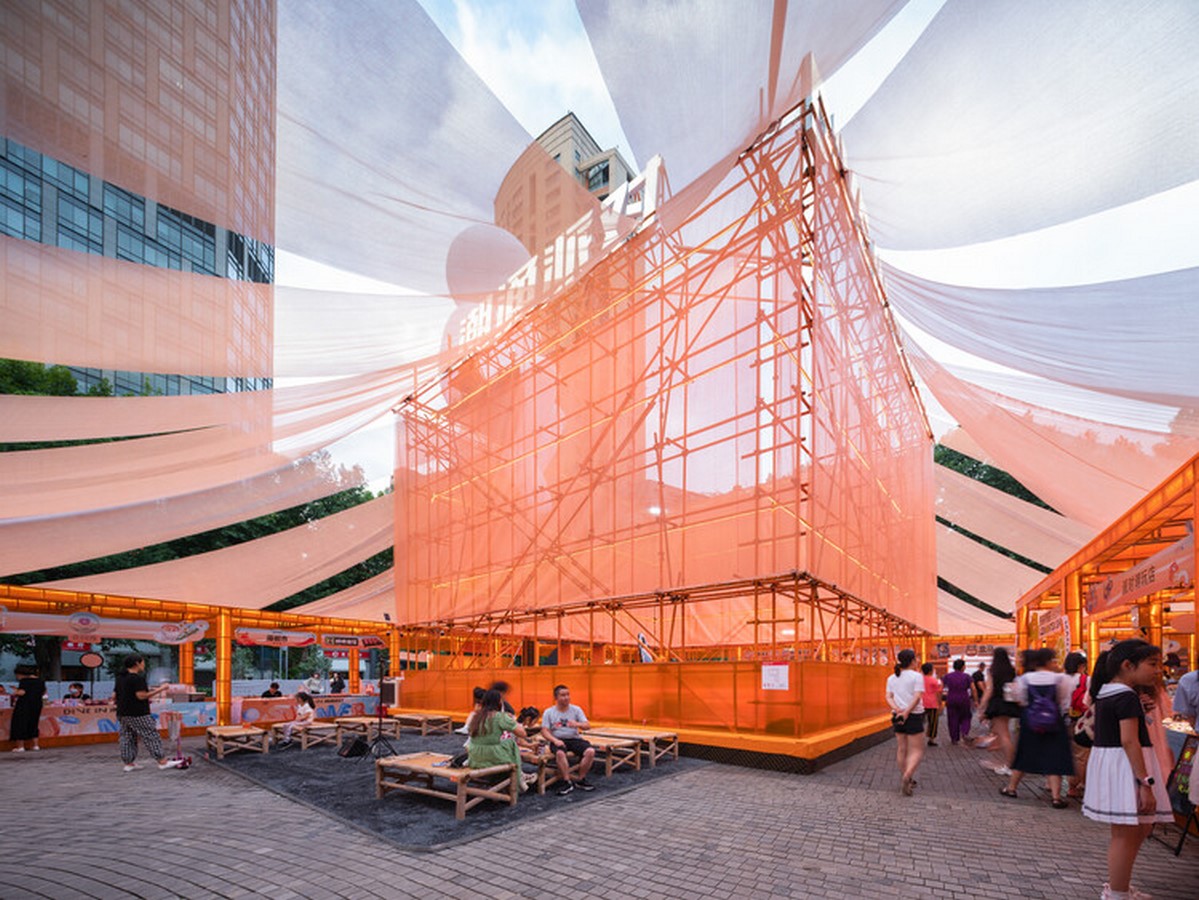
Conclusion
The Dive In Summer Pavilion stands as a testament to the potential of light and transparent architecture in urban environments. By embracing principles of sustainability and cultural resonance, UAO Design has created a space that not only provides respite from the summer heat but also fosters community engagement and connection to local history.

